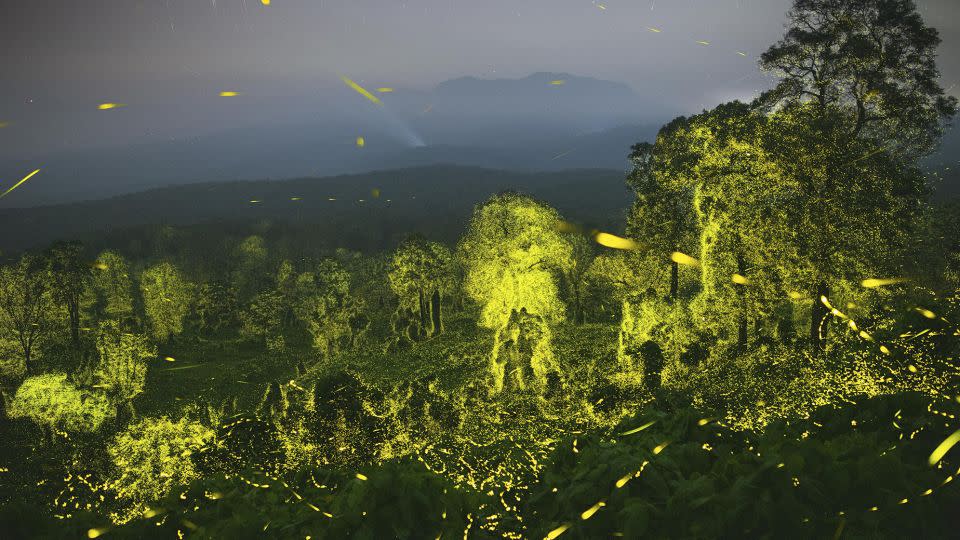‘Ring of fire’ eclipse promises a celestial celebration
Editor’s note: A version of this story appeared in CNN’s Wonder Theory science newsletter. To get it in your inbox, sign up for free here.
Eclipses have entranced and mystified humans for millennia.
In records kept by Chinese astronomers more than 4,000 years ago, people would bang on pans during an eclipse to scare away the dragon that was trying to eat the sun.
Now, we know when the moon will move across the face of the sun, temporarily blocking its light and creating a spectacle as it drapes part of our planet in darkness.
But we still can’t help but be transfixed by the sight.
The celestial phenomenon is one that unites us as we stop to gaze in awe while the central force of our solar system dances out of view and the moon seemingly takes a bite out of our star.
After all, it’s not often that millions of people have a reason to come together in the celebration of wonder.
Solar update

Saturday’s annular solar eclipse will create a dazzling “ring of fire” across the Americas.
It will begin in the United States at 9:13 a.m. PT (12:13 p.m. ET) and pass from Oregon to Texas’ Gulf Coast, appearing in Nevada, Utah and New Mexico en route. The eclipse will also be visible in parts of California, Idaho, Colorado and Arizona before finishing up in the US at 12:03 p.m. CT (1:03 p.m. ET).
After leaving the States, the eclipse will cross Mexico, Belize, Honduras, Panama and Colombia before ending off South America’s Atlantic coast at Natal, Brazil.
Make sure you have certified eclipse glasses or solar viewers, and check out our tips to safely take in every aspect of the annular or partial eclipse, depending on where you are.
Clouds may spoil the view for some, and the eclipse may even affect the weather, but never fear: NASA will share live streams from multiple locations within the path of the annular eclipse.
We are family
The achievements of Viking leaders were carved on runestones and erected in Denmark more than 1,000 years ago.
Now, researchers have found two separate sets of runestones that mention a Viking queen named Thyra, which suggests she played a key role and held considerable power.
“Runestones in Denmark were mostly erected in honour of men, but Thyra is commemorated on more runestones than any other person in Viking Age Denmark,” said Dr. Lisbeth Imer, a curator and senior researcher at the National Museum of Denmark in Copenhagen.
Other worlds

The world this week caught its first glimpse of the rocks and dust retrieved from a 4.5 billion-year-old asteroid when NASA revealed the Bennu sample collected by the OSIRIS-REx mission.
The science team hasn’t even opened the bulk sample yet, but a quick analysis of the “bonus” particles in the science canister yielded stunning insights.
The extraterrestrial materials contain water and a large amount of carbon, which suggest that asteroids may have delivered the building blocks of life to Earth.
Thrilled with the “scientific treasure” retrieved by the mission, principal investigator Dante Lauretta of the University of Arizona and the OSIRIS-REx team will spend the next couple of weeks determining just how much material they collected from the space rock.
Additionally, NASA launched the Psyche mission Friday to explore a metal asteroid, which could provide our first glimpse into the iron-rich heart of a planet.
A long time ago
The white Greek marble statues in museum collections today once blazed with color and elaborate floral designs, according to a new study.
Researchers at London’s British Museum, home to many sculptures from the 2,500-year-old Parthenon, discovered traces of paint on figures in a frieze.
Noninvasive imaging techniques detected distinct hues such as “Egyptian blue” and “Parthenon purple” that brought details on the mythical figures to life.
Separately, five tiny and intricately detailed gold foil figures called “gullgubber” were uncovered in Norway, shedding light on what Scandinavian life was like more than 1,400 years ago.
Wild kingdom

An icy ibex, a relaxing hippo family and a forest illuminated by fireflies are just some of the winning images from the Wildlife Photographer of the Year 2023 competition.
French underwater photographer and marine biologist Laurent Ballesta won for the second time with his image of a “hauntingly beautiful” drifting horseshoe crab.
Be aware that some of the images reflect unflinching moments of the natural world and may not be for the faint of heart.
Meanwhile, the story of a lonely mountain lion has inspired the creation of the world’s largest wildlife overpass in California.
Discoveries
Enlighten your friends and family with these fresh reads:
— The humanlike prosthetic hand used by Luke Skywalker in “Star Wars: Return of the Jedi” is a ways off, but doctors have developed a functioning bionic prosthetic hand that can feel some sensations.
— Two dozen ancient earthworks have been discovered deep in the Amazon rainforest, and researchers believe there may be 10,000 more structures waiting to be found.
— A scuba-diving biologist spotted “a rather charismatic little snail” off the Florida Keys and named the brightly colored mollusk in honor of the late singer-songwriter Jimmy Buffett.
Like what you’ve read? Oh, but there’s more. Sign up here to receive in your inbox the next edition of Wonder Theory, brought to you by CNN Space and Science writers Ashley Strickland and Katie Hunt. They find wonder in planets beyond our solar system and discoveries from the ancient world.
For more CNN news and newsletters create an account at CNN.com

